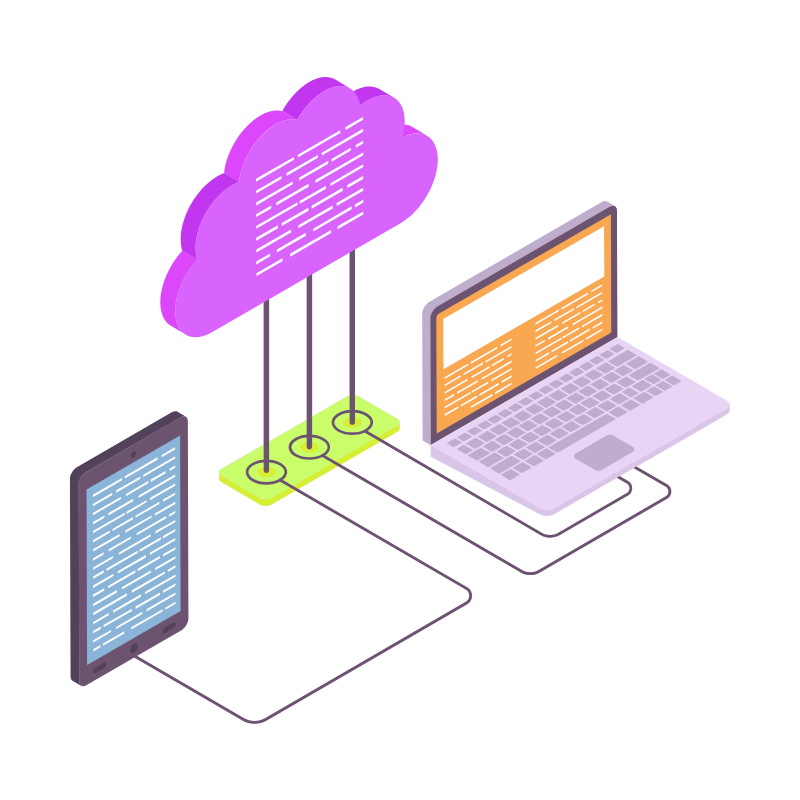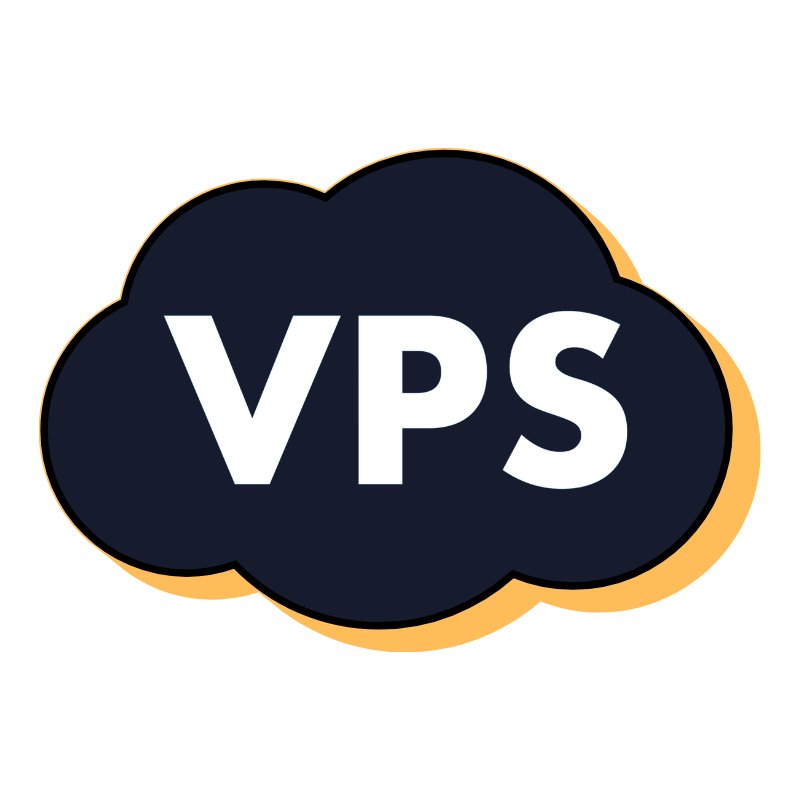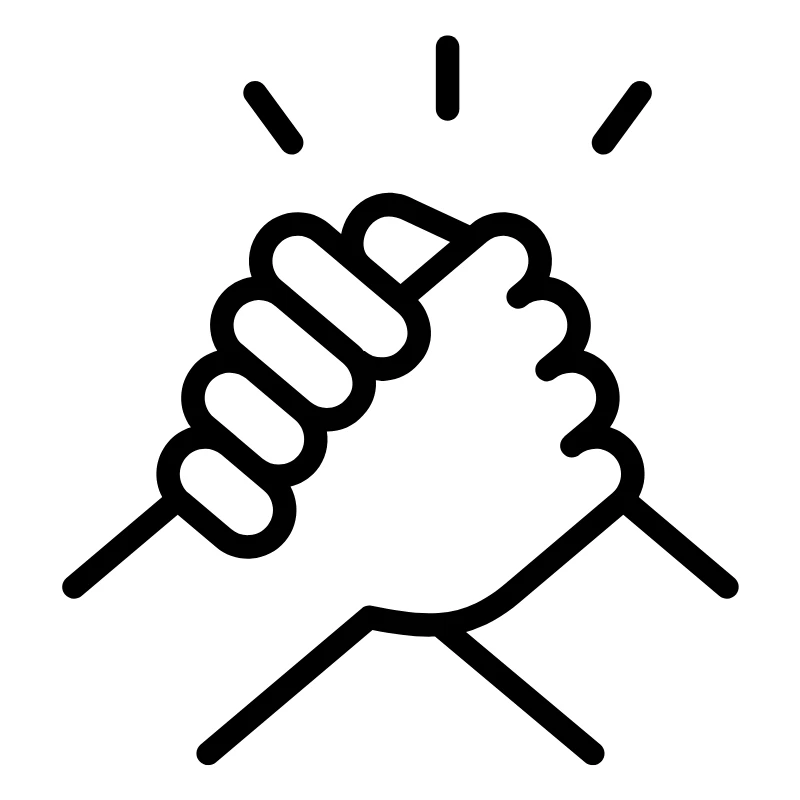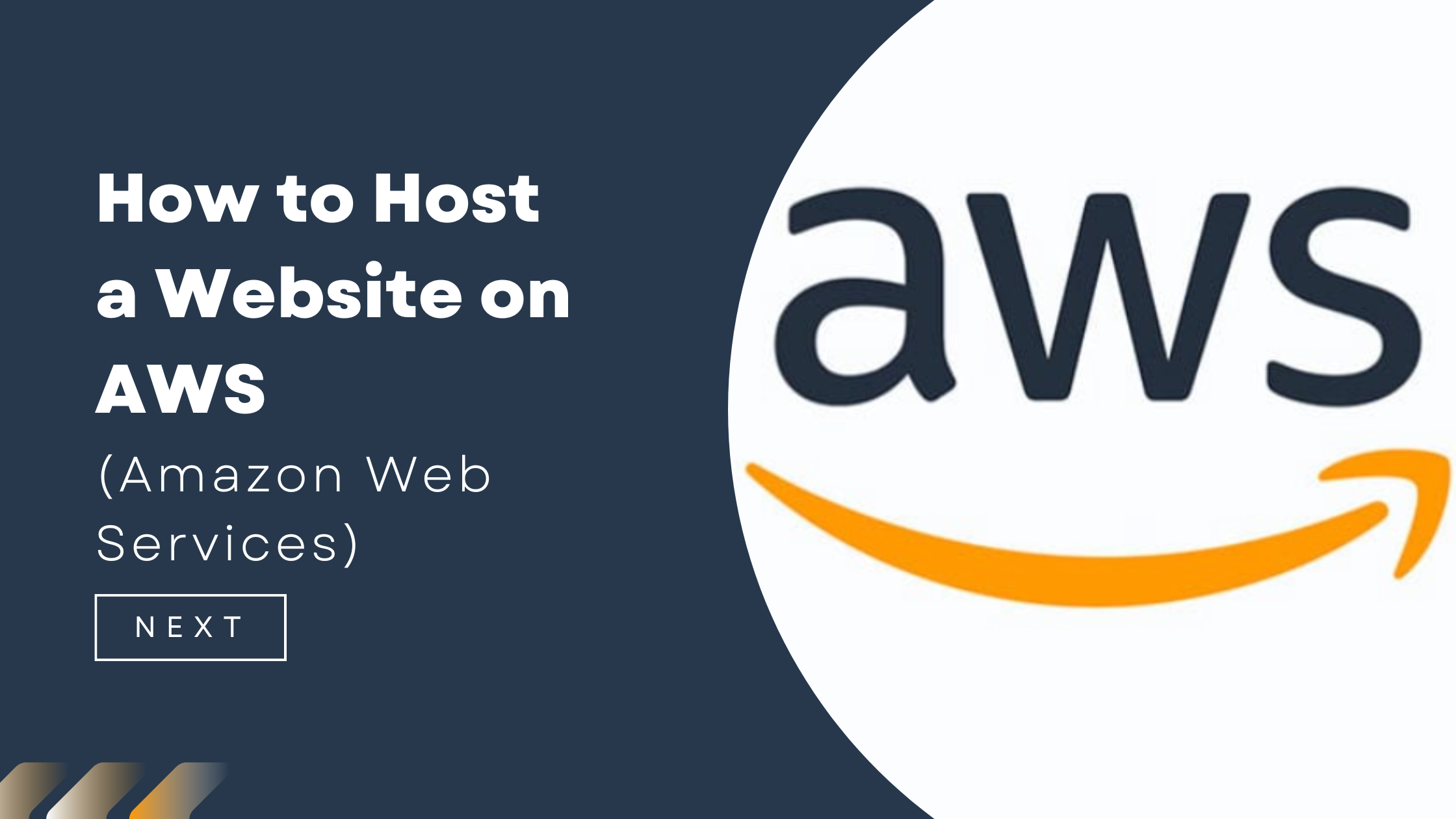A web application (web app) is software you can access and use directly through your browser.
Unlike traditional desktop software, which requires installation, web applications function through the internet, allowing you to log in from anywhere, on any device, and still enjoy the same seamless experience.
Characteristics of Web Apps
- Modern web apps are designed to be scalable, accessible, and user-centric. Here are some of the core traits that define them:
- You can access them from any modern browser, on desktop, mobile, or tablet, without needing to download anything.
- No installation required, so no need to worry about storage space, updates, or compatibility issues. Everything runs in the cloud or on the server.
- They’re easy to scale, thanks to cloud hosting. E.g., you can add new users instantly without installing extra software or upgrading infrastructure.
- Teams can build, collaborate, and interact in real time.
- Ease of use. E.g., you can add or update projects by dragging and dropping tasks on a board, chat with a teammate, and easily add media
- They offer tailored experiences based on user roles, preferences, or profiles.
- These characteristics enable businesses to serve global audiences, respond promptly to market changes, and deliver fast and reliable service.
Examples of Web Apps
There are hundreds of web apps. Below is a breakdown of major web application categories, along with well-known examples in each.
This illustrates the versatility and widespread adoption of web-based platforms across industries and functions:
Productivity and Collaboration Web Applications
Productivity and collaboration tools became popular as workplaces continued to digitize. These tools perform different tasks such as: coordinating tasks across teams, cooperating on writing content together, and holding meetings from different time zones.
Productivity apps also enhance how individuals interact in a team and keep everyone aligned, efficient, and focused.
With productivity tools, people can reduce the chaos of scattered files, endless email threads, and forgotten follow-ups. They feature centralized workspaces where you and your team can communicate, share knowledge, and track progress in real time.
1) Slack
Slack has revolutionized how colleagues communicate in the workplace by organizing conversations around teams and projects.
Where before you had to deal with inboxes full of emails that probably have no bearing on your work, with Slack,
- You only participate in relevant discussions in small groups
- You can resolve everything urgently, so there’s no risk of creating email clutter
Beyond messaging, Slack connects with thousands of other apps, turning it into a powerful work tool. E.g., you can connect your project management tool and get alerts from it, review a Google Doc, or launch a Zoom call, all without leaving Slack. It’s designed to keep everything and everyone within reach.
It’s also a fun tool to use; teams can build a shared culture with emojis, polls, GIFs, and even create groups for discussing informal topics.
Best for: Teams that want to streamline communication and cut down on internal emails
Slack Features
- Real-time messaging with threads, mentions, and emoji reactions
- Channels for organizing team discussions
- Integrations with over 2,600 tools (e.g., Google Drive, Trello, Zoom)
- Workflow Builder for automating repetitive tasks
2) Google Docs
When MS Word was invented, it was such a big shift from using typewriters. Everyone was excited. But Word had some disadvantages: it was desktop-based, there was no version control, it didn’t support collaborative features, so feedback had to be via email.
Google Docs came and changed all that by allowing teams to collaborate on documents. No more emailing versions back and forth or worrying about who has the latest file, because everyone works on the same document in real time. You can see edits as they happen, add comments, suggest changes, and even chat with teams in the sidebar.
And because documents live in the cloud, sharing them is easy, so there’s no need to download anything. More so, you can control who can view or edit.
Best for: Writers, editors, teams, and students working on shared content
Google Docs Features
- Real-time editing and collaboration
- Autosave and revision history to track changes
- Commenting and suggestion mode for easy feedback
- Shareable via link
- Customizable permissions
3) Monday.com
When you think of organizing your day, you could use a task list or to-do list on your calendar or a piece of paper. But this static method of approaching your task has one big disadvantage: you cannot track task progress, and if tasks roll over, you’ll need to reschedule or write them down all over again.
Monday.com offers a solution to this problem by giving you a system to manage your work visually and collaboratively, whether you’re coordinating a product launch, managing a content calendar, or running an event.
With Monday boards, you can organize tasks into customizable columns, assign owners, and set deadlines. You can choose from multiple views (Kanban, Gantt, calendar) depending on your workflow.
Its automation features also let you eliminate repetitive tasks. For instance, you can set up rules to notify a teammate when a task’s status changes, or automatically move items between columns.
And with recent AI integrations, you can generate entire workflows just by describing what you want in text.
Best for: Project managers and teams with complex, deadline-driven workflows
Monday.com Features
- Customizable boards, timelines, and workflows
- Built-in automation for task assignment, notifications, and more
- Integration with Google Workspace, Slack, Outlook, and other tools
- “Monday magic” AI tools for faster workflow setup
4) Zoom
Zoom may have started as a tool for holding virtual meetings. But it’s not just a regular video platform. Its features, like breakout rooms, live polls, screen sharing, and chat, make it an interactive tool for team communication needs, including one-on-one calls, team standups, large webinars, and online classes.
Recent Zoom updates now integrate AI tools to help users work smarter, with features such as automatic meeting summaries and transcription.
It’s reliable and easy to use, making it a go-to solution for organizations of all sizes
Best for: Hosting remote meetings or events for teams, educators, and organizations.
Zoom Features
- HD video and audio meetings with screen sharing
- Breakout rooms, whiteboarding, and chat during sessions
- AI Companion for meeting summaries and action items
- Integrations with calendars and productivity platforms
E-Commerce Web Applications
Web applications have made it easy for anyone, from individuals to small businesses and multinationals, to sell products and services and engage with customers online.
E-commerce web apps handle all purchase-related tasks, such as showcasing products, managing orders, inventory, shipping, and customer interactions.
With e-commerce web apps, you can build, automate, personalize, and grow your business worldwide.
5) Amazon
Amazon is the most influential e-commerce platform in the world. It offers millions of products across every imaginable category, and is famous for fast shipping, especially Amazon Prime’s fast shipping.
Amazon sets the standard for global e-commerce due to its intuitive interface, rich product descriptions, and customer reviews, all of which make it easy for buyers to make informed decisions.
Businesses that sell on Amazon have tools for listing products, managing inventory, running advertising campaigns, and even using Amazon’s fulfillment services to handle shipping and returns.
Best for: Shoppers seeking variety and convenience; sellers wanting global reach
Amazon Features
- Massive product catalog with personalized search and recommendations
- One-click checkout and Prime benefits (fast delivery, media perks)
- Seller tools: order management, fulfillment, advertising
- Customer reviews, wishlists, and easy returns
6) Shopify
Unlike Amazon, Shopify is not a marketplace. It is a platform for building independent online stores. The great thing about Shopify is that anyone can build a branded store on it because it supports codeless store building with its wide range of customizable templates.
Its drag-and-drop builder is easy to use. It also has an app marketplace, which you can use to tailor your store to fit unique product lines and customer journeys.
Beyond storefront design, Shopify handles the entire sales workflow, including customer checkout, inventory tracking, inventory tracking, abandoned cart recovery, and email marketing.
It even supports multi-channel sales, so you can sell on Instagram, Facebook, or even physical stores. It also supports international sales, making it a powerful tool for growing brands.
Best for: Entrepreneurs and businesses who want to build and scale a custom online store
Shopify Features
- Customizable store themes and templates
- Built-in tools for payments, shipping, marketing, and analytics
- Multi-channel selling across web, social media, and retail
- App marketplace for extending functionality
7) Etsy
Etsy is a specialized marketplace focused on handmade, vintage, and craft goods. It gives independent creators, artists, and collectors a platform to sell unique products to a global audience. Unlike mainstream marketplaces like Amazon, Etsy has a curated feel and vibrant community, making it stand out from other marketplaces.
Etsy doesn’t support generic product catalogs, but instead highlights the story behind each item, helping sellers connect with buyers who value originality and craftsmanship.
It has tools for managing inventory, customizing listings, tracking analytics, and communicating with buyers.
It also gives you access to advertising tools to run promotions and grow your visibility. Marketplace tailored for handmade, vintage, and creative products.
Best for: Artists, crafters, and shoppers who want to buy and sell unique items.
Etsy Features
- Personalized storefronts and seller analytics tools
- Secure checkout and buyer protection policies
- Direct messaging for customer engagement
Social Media and Communication Web Applications
Social media platforms are useful for building casual networks, professional connections, and thought leadership through content, commerce, and brand presence.
All social networks allow you to share content in one form or another, from text to photos and videos, in addition to having private conversations and public discussions. Some businesses even use their social channels for customer support.
Social web apps stand out for their ability to personalize each user’s experience, and they do this through feeds, notifications, and content suggestions.
8) Facebook
Facebook is one of the most popular social web apps, with over 3 billion users.
You can use it to connect with friends and family, join groups, follow pages, post content, and comment on posts. Features like Facebook Stories and Live videos keep the platform interactive and timely.
Facebook pages make Facebook a powerful business tool. With a company page, you can reach audiences with content and ads, host events, and sell directly through shops.
Its ad system allows for hyper-targeted marketing for all sizes of brands and budgets.
Best for: Users looking to connect socially, and businesses wanting wide audience reach
Facebook Features
- News feed for personalized content updates
- Groups, events, and live video streaming
- Facebook Marketplace for commerce
- Business pages and ads for marketing and outreach
9) LinkedIn
LinkedIn is a professional networking platform where people go to showcase their work experience, skills, certifications, and achievements. The platform supports company pages, job postings, professional groups, and educational content.
Unlike other social networks, LinkedIn prioritizes thought leadership and industry news, making it an invaluable platform for building brand authority and generating leads.
With well-written posts and insightful engagement, you can significantly enhance your professional reputation on LinkedIn.
Best for: Professionals, job seekers, recruiters, and B2B marketers
LinkedIn Features
- Professional profiles and digital resumes
- Job search tools and recruiter access
- Industry news feed and thought leadership content
- Networking through connections, groups, and direct messaging
10) WhatsApp
WhatsApp began as a simple messaging app, but like Facebook, billions of people now use it to communicate. It stands out for enabling encrypted text messaging. But it also supports voice and video calls, group chats, document sharing, and voice notes, all over an internet connection.
WhatsApp has also expanded into business communication, allowing companies to create business profiles on WhatsApp Business, display products, manage orders, and offer customer support.
Best for: Everyday communication, small business support, and mobile-first customer service
WhatsApp Features
- End-to-end encrypted messaging, calls, and media sharing
- Group chats and voice note features
- WhatsApp Business for customer communication and product catalogs
- Works on both mobile and desktop with easy syncing
Entertainment Web Applications
Most people now access movies, TV shows, gaming, music, and live events on streaming platforms. This is because entertainment web applications deliver content on-demand or in real-time on any device. They also enable content personalization, so you can watch what you want when you want to.
11) Netflix
Netflix is a pioneer in video web streaming apps. It started as a DVD rental service, but its shift to streaming content transformed how people watch movies and TV shows.
It has a massive library of licensed titles and original content, and a sophisticated recommendation algorithm that tailors your entertainment. Besides its content variety, Netflix stands out for its ease of use.
You can start watching on your phone and pick up where you left off on another device, you can pause shows, download, create multiple profiles, and enable parental control.
Best for: Viewers looking for variety, quality content, and binge-worthy experiences
Netflix Features
- Extensive catalog of movies, shows, and Netflix Originals
- Personalized recommendations based on viewing history
- Seamless cross-device experience with offline viewing options
- High-quality video streaming with adaptive bitrate support
12) YouTube
YouTube is the world’s largest video-sharing platform. Individuals use it to share personal videos of their pets, babies, recipes, gardening, daily habits, life tips, etc.
Anyone can upload videos to YouTube, build a subscriber base, and even monetize through ads, memberships, or merchandise.
Beyond casual viewing, YouTube has grown into a hub for learning and marketing. Educational channels, DIY series, livestreams, music videos, and comedy sketches all exist on the channel.
Best for: Anyone who wants to watch, learn, or create video content.
YouTube Features
- User-generated and professional video content
- Shorts and Community posts keep creators constantly engaged with their audience.
- YouTube’s algorithm curates content for each user
- Monetization options for creators (ads, merch, Super Chat)
- Live streaming capabilities and content recommendations
- Channel subscriptions, playlists, and comments for engagement
13) Spotify
Spotify is a music, video, and podcast streaming service. It has a clean design and a friendly freemium model that has contributed to its global reach. It has a massive library of content, which it curates into playlists and personalized recommendations based on your user history, mood, or habits.
You can follow artists, create playlists, and discover new tracks through features like Discover Weekly and release radar.
Spotify supports offline playback, cross-device syncing, and integrations with platforms like Discord and Google Maps.
If you’re a podcaster or advertiser, you’ll find Spotify’s analytics and targeting tools powerful for your marketing efforts.
Best for: Music lovers, podcast listeners, and brands that want to reach engaged audio audiences.
Spotify Features
- On-demand music and podcast streaming with personalization
- Curated playlists and algorithmic discovery tools
- Offline listening, cross-device syncing, and mobile integration
- Free (ad-supported) and premium (ad-free) subscription tiers
14) Twitch
Twitch is a popular platform for live streaming. It was originally focused on video games, but has expanded into music, talk shows, art, and real-time events.
As a viewer, you can interact with streamers through live chat and donate or subscribe. As a steamer, you can build communities around shared interests. Twitch is unique for its interactivity, so streams often feel like conversations, not broadcasts. And the strong sense of community keeps viewers engaged.
If you’re a creator, you can monetize through ads, subscriptions, affiliate programs, and sponsorships.
Best for: Gamers, creators, and viewers seeking live, interactive entertainment
Twitch Features
- Live streaming with interactive chat and engagement tools
- Community-building features like emotes, channels, and raids
- Monetization for streamers via subscriptions, Bits, and brand deals
- Categories beyond gaming: art, music, talk shows, “just chatting”
Utility Web Apps
Beyond entertainment, web apps also serve practical purposes such as organizing files, securing data, and offering access to specialized tools or knowledge.
These web apps are known as utility tools. They are especially important for IT professionals, developers, students, and power users, but they’re also becoming more accessible to everyday users as well.
CCleaner is a popular example of a utility tool.
15) CCleaner
CCleaner is a well-known utility app that focuses on system performance and digital privacy. It can analyze your system, clean up junk files, improve speed, update drivers and software, and optimize startup.
It was originally designed as a downloadable PC cleaner, but now it offers a web-based dashboard.
CCleaner is made for technical users looking for a simple way to manage their devices without complex configurations. It’s also great for power users who want deep insights into system behavior, processes, and storage.
Best for: Users wanting a cleaner, faster computer without deep technical knowledge
CCleaner Features
- Cleans up temporary files, caches, and unused system data
- Optimizes system startup and updates outdated drivers
- Real-time performance monitoring with health checks
- Available in both desktop and cloud-based versions
16) LastPass
LastPass is a secure password manager that stores passwords in an encrypted vault, making it easier to use passwords across sites. It has browser extensions and mobile support, making it accessible from anywhere.
It includes features like password generators, secure notes, two-factor authentication, and emergency access. You only need one master password to get into LastPass.
For teams and businesses, LastPass offers admin dashboards, user groups, and role-based access control.
Best for: Individuals and organizations wanting secure, streamlined login management
LastPass Features
- Stores and encrypts passwords
- Autofills login forms
- Generates strong passwords and organizes sensitive data
- Supports two-factor authentication and emergency access
- Manages employee credential access
Financial Web Applications
If you want to manage your money today, you don’t need to queue at the bank, use spreadsheets, or call your financial advisor. All you need is a financial web app.
Financial web apps offer fast, secure, and personalized access to banking, investing, and money management. You can use them to access the stock market, for budgeting, or for online banking
The best financial web apps have high standards for privacy, reliability, and compliance, given the sensitivity of the data they handle.
17) Robinhood
Robinhood is an investing app that allows anyone to start trading stocks, ETFs, options, and cryptocurrencies with as little as $1.
It has an intuitive design, a friendly user interface, real-time market data, and minimal jargon, making it especially appealing to anyone new to finance.
Best for: First-time investors and mobile users who want accessible trading.
Robinhood Features
- 24/7 crypto trading and instant deposits
- Commission-free trades on stocks, crypto, and ETFs
- Modern, mobile-first design and real-time notifications
- Research tools, managed portfolios, and in-depth analytics on the gold plan
- Educational content through Robinhood Learn
18) Wealthsimple
Wealthsimple is an investment tool that automates financial services such as portfolio management, retirement planning, tax filing, and investing.
Wealthsimple is unique for its hands-off investing. To get started, you answer a few questions, and the app builds a diversified portfolio managed by algorithms and financial experts.
It’s an ideal app if you want to make smart investments without spending hours researching markets.
Best for: Investors who prefer a hands-off, low-maintenance approach.
Wealthsimple Features
- Automated, personalized portfolio creation and management
- Offers tax-efficient investing and socially responsible options
- Simple onboarding with an intuitive user experience
- Wealthsimple Cash and Crypto for banking and digital assets
Education Web Applications
Education web applications have made it possible to earn degrees and learn new skills from a browser.
These e-learning tools have reshaped education by prioritizing access, personalization, engagement, and interactivity. And with AI on the rise, e-learning web apps also offer AI-driven support.
This makes education web apps more flexible and adaptive than learning in a physical classroom
19) Google Classroom
Google Classroom is a powerful learning management system (LMS) that connects teachers and students in a single, organized platform.
It’s designed to streamline the flow of assignments, grading, and communication. Teachers can create and distribute assignments, give feedback, and track student progress, while students can submit work, ask questions, and collaborate with classmates.
Google Classroom integrates with other Google tools like Docs, Slides, Meet, and Drive. It also uses features like rubrics, announcements, and scheduled posts to manage administrative tasks and structure remote learning.
Best for: Managing classroom activities and remote learning in schools and universities.
Google Classroom Features
- Distributes assignments, materials, and feedback in one place
- Syncs with Google Docs, Drive, Meet, and Calendar
- Real-time collaboration, commenting, and grading
- Accessible on desktop, tablet, or mobile devices
- Administrative tools like announcements and post scheduling
20) Coursera
While Coursera is technically an educational platform, it fits here because of how it delivers structured information as a tool, by helping people access knowledge they’d traditionally get from universities. It offers courses, specializations, and degrees, often in partnership with leading colleges and universities.
The platform allows for self-paced learning or attending live lectures. Course structures include video lectures, peer-reviewed assignments, and certificates.
Some courses are free to audit, while paid courses unlock graded material and professional certificates.
Best for: Lifelong learners, job seekers, and professionals expanding their skills
Coursera Features
- University-backed online courses and full degree programs
- Includes quizzes, assignments, and interactive projects
- Certificates of completion and industry-recognized credentials
- Mobile-friendly platform
- Progress tracking
21) Udemy
Unlike Coursera, the courses on Udemy are created by individuals, not necessarily universities. This means you’ll find tutorials on niche topics, creative tools, and business strategies. It’s especially popular for learning software, freelancing, entrepreneurship, and practical skills.
There’s also some formal education content, although Coursera is better if that’s the category you’re interested in.
Udemy courses are usually video-based with downloadable resources and lifetime access. Anyone with an internet connection can access Udemy.
Best for: Learners who want practical, self-paced education at a low cost.
Udemy Features
- Affordable, one-time purchase courses across thousands of topics
- Lifetime access to video content and course materials
- Instructor messaging and Q&A forums for support
- Strong in tech, design, business, and hobby-related learning
22) Kahoot!
Kahoot! is a game-based learning platform favored by teachers, trainers, and even businesses for its interactive quizzes. Players compete by answering questions in real time and earn points for speed and accuracy. In a classroom environment, Kahoot! encourages knowledge retention as it allows students to review topics in a fun, low-pressure environment.
Best for: Educators and trainers who want to make learning more engaging and fun.
Kahoot Features
- Game-style quizzes for real-time or self-paced learning
- It supports asynchronous modes
- Integrates multimedia such as video, GIFs, and images into questions
- Leaderboards, timers, and music boost engagement
- Great for classrooms, meetings, or virtual sessions
- Supports templates for quick quiz creation
23) Photomath
Photomath is the online equivalent of a personal math tutor.
To use Photomath, simply scan a handwritten or typed equation with a smartphone camera, and it will explain how to solve it and even give you the reasoning behind each step. It even has an AI-powered chatbot that can answer follow-up questions.
So this app is more than just an answer sheet. It explains math concepts and makes math less intimidating, which is crucial for success in classwork, exams, and at work.
Best for: Students who need help with math homework or want to understand math concepts
Photomath Features
- Scan and solve math problems using your camera
- Step-by-step explanations and animated solution breakdowns
- Works with algebra, calculus, statistics, and more
- AI chatbot support for clarifying concepts
Healthcare Web Applications
Healthcare is no longer confined to hospitals and clinics. Web applications now allow patients to schedule appointments with doctors, access lab test results, consult doctors remotely, and track their health from wearable devices.
In this way, these web apps improve access to healthcare on the one hand, while giving patients greater control over their health.
24) Luma Health
Luma Health simplifies healthcare communication and coordination with appointment reminders, automated check-ins, and post-visit follow-ups. It aims to reduce no-shows and improve the overall patient experience.
Your doctor can monitor your health on a dashboard, send personalized health advice, and engage with you after your visit.
Luma integrates with EHR systems, making it easy for clinics and hospitals to add it into their existing workflows.
Best for: Healthcare providers who want to streamline virtual care and improve communication with their patients
Luma Features
- Telehealth functionality with scheduling and video visits
- Automated appointment reminders and follow-ups
- Dashboards for tracking patient engagement and outcomes
- Educational content delivery and satisfaction surveys
25) Clearwave
Clearwave is another web app that reduces patient wait times by enabling online pre-registration, insurance verification, and 24/7 online appointment booking.
By automating these key administrative tasks, Clearwave improves efficiency without sacrificing the quality of care.
Patients can complete their forms before arriving, and staff get access to accurate, up-to-date data. This ensures the check-in process is smooth from the moment a patient walks in.
Best for: Clinics and hospitals that want to modernize front-desk operations and reduce long patient queues
Clearwave Features
- Digital pre-registration and real-time insurance checks
- 24/7 self-scheduling with calendar integration
- Patient kiosk systems and mobile check-ins
- Reduced admin burden and fewer paper forms
26) MyChart
MyChart is both a health tracker and a financial organizer. You can view your medical records on it, schedule appointments, and pay bills online. You can even set up payment plans, track insurance coverage, and receive billing reminders.
MyChart integrates with wearable health devices and sends alerts for upcoming visits, test results, or outstanding balances.
Best for: Patients who want transparency and control over their healthcare finances.
MyChart Features
- Secure access to bills, test results, and appointments
- Online bill payments and insurance tracking
- Integration with health data from wearables
- Patient engagement tools like messaging and alerts
Final words: Which Web App Are You Interested In?
With that, we’ve covered all major web applications and how they could add value to your workflow. Try out some of them and let us know in the comments section.
 Domain SearchInstantly check and register your preferred domain name
Domain SearchInstantly check and register your preferred domain name Web Hosting
Web Hosting cPanel HostingHosting powered by cPanel (Most user friendly)
cPanel HostingHosting powered by cPanel (Most user friendly) KE Domains
KE Domains Reseller HostingStart your own hosting business without tech hustles
Reseller HostingStart your own hosting business without tech hustles Windows HostingOptimized for Windows-based applications and sites.
Windows HostingOptimized for Windows-based applications and sites. Free Domain
Free Domain Affiliate ProgramEarn commissions by referring customers to our platforms
Affiliate ProgramEarn commissions by referring customers to our platforms Free HostingTest our SSD Hosting for free, for life (1GB storage)
Free HostingTest our SSD Hosting for free, for life (1GB storage) Domain TransferMove your domain to us with zero downtime and full control
Domain TransferMove your domain to us with zero downtime and full control All DomainsBrowse and register domain extensions from around the world
All DomainsBrowse and register domain extensions from around the world .Com Domain
.Com Domain WhoisLook up domain ownership, expiry dates, and registrar information
WhoisLook up domain ownership, expiry dates, and registrar information VPS Hosting
VPS Hosting Managed VPSNon techy? Opt for fully managed VPS server
Managed VPSNon techy? Opt for fully managed VPS server Dedicated ServersEnjoy unmatched power and control with your own physical server.
Dedicated ServersEnjoy unmatched power and control with your own physical server. SupportOur support guides cover everything you need to know about our services
SupportOur support guides cover everything you need to know about our services








